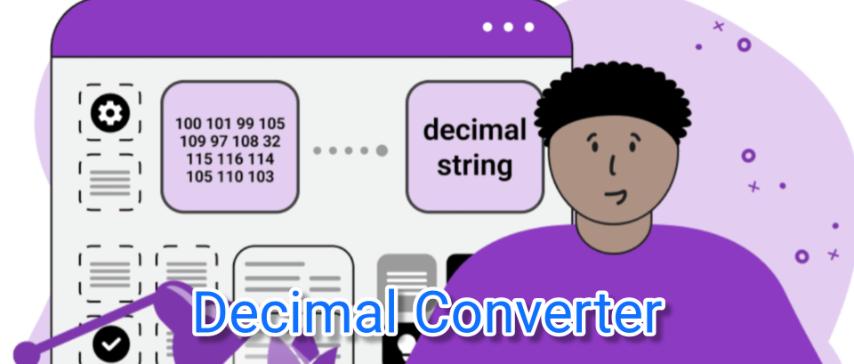
Decimal Converter: Simplifying Number System Conversions
Created on 1 October, 2025 • Converter Tools • 19 views • 2 minutes read
A decimal converter is an essential tool for students, programmers, and anyone dealing with different number systems.
The decimal system is the most familiar number system, used in everyday life for counting, mathematics, and financial transactions. It is a base-10 system, meaning it uses digits from 0 to 9. However, computers and digital devices often rely on other number systems like binary, hexadecimal, or octal. To bridge the gap between human-readable decimal numbers and machine-friendly formats, a decimal converter is an essential tool.
What Is a Decimal Converter?
A decimal converter is a tool that allows users to convert decimal values into different number systems and vice versa. This includes:
- Decimal to Binary – Converting base-10 numbers into 0s and 1s for computer processing.
- Decimal to Hexadecimal – Useful in programming, especially when working with memory addresses and color codes.
- Decimal to Octal – Converting decimal numbers into base-8 values.
- Binary/Hex/Octal to Decimal – Translating machine-friendly formats back into decimal for human readability.
For example, the decimal number 255 equals 11111111 in binary, FF in hexadecimal, and 377 in octal.
Why Use a Decimal Converter?
1. Programming and Development
Programmers often need to switch between decimal, binary, and hex while working with low-level code, memory, or color representation in web development.
2. Education and Learning
Students studying mathematics, digital logic, or computer science use decimal converters to understand number system relationships more easily.
3. Data Analysis and Networking
Decimal converters are used in networking and encryption, where binary and hex are common, but decimal representation is easier for humans to interpret.
How Does a Decimal Converter Work?
A decimal converter uses mathematical rules to transform numbers between different bases:
- Decimal to Binary: Divide the number by 2 repeatedly and record the remainders. For example, decimal 13 converts to binary 1101.
- Decimal to Hexadecimal: Divide the number by 16 and use digits 0–9 and letters A–F for remainders. For example, decimal 47 converts to hex 2F.
- Decimal to Octal: Divide the number by 8 repeatedly. For example, decimal 64 becomes octal 100.
- Binary/Hex/Octal to Decimal: Multiply each digit by its base raised to the power of its position and sum the results.
Most online converters automate these processes instantly, giving accurate results without manual calculation.
Benefits of Using Online Decimal Converter Tools
Instant and Accurate Results
Manual conversions can be confusing and time-consuming. Online tools provide quick, error-free solutions.
Multiple Conversion Options
Most decimal converters allow switching between binary, hex, octal, and decimal within one tool.
Easy to Use
Even beginners can enter a number and get results instantly without advanced mathematical knowledge.
Conclusion
A decimal converter is an essential tool for students, programmers, and anyone dealing with different number systems. It simplifies the process of converting numbers between decimal, binary, hexadecimal, and octal, ensuring accuracy and saving time. Whether you are learning computer basics, coding software, or analyzing digital systems, a decimal converter makes working with numbers more efficient and user-friendly.
If you want to master number systems and improve your workflow, using a decimal converter is the simplest and smartest choice.